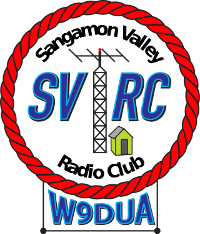Getting on the Air
Ready to take the plunge? This is a full dunk. The type of equipment listed here will get you started on high frequency (160 to 10 meters) where you can talk to hams long distance: all around the country and the WORLD. For the budget minded shopper, you can get on the air with a basic set up for less than $1,000 (2017 prices-look for sales). It is recommended that if you buy a used transceiver, that you buy from someone you know. A used radio may have "high miles" on it and may prove to be a disappointment for a new ham. Before making any purchases, make some decisions about what you want to do and where you want to locate your ham shack. Discuss your plans with an Elmer. Even with good planning, you may still accumulate a bucket full of parts that do not get deployed in your new ham shack right away. Don't despair! You will use the extra parts eventually.
Enjoy all that ham radio has to offer at this level and get your General license.
- Transceiver-Base Station HF 160-10 meters (try to get 6 meters too): 100 watts, multiple modes (lower and upper side bands (LSB, USB), CW, AM, FM), auto-tuner, hand microphone, DC power cord. Hint: since you are spending enough for the radio, get one that has enough to offer you so that it will serve you as your needs/wants evolve.
- Antenna: there are numerous configurations for antennas. A multi-band antenna will simplify multi-band operations-you will need an antenna tuner (internal or external). The location of your ham shack will impact your antenna choices. The antenna has to be up in the air. Tall trees, flag poles, military surplus masts, attic space are the most economical choices.
- Power source: 12 volt deep cycle battery or other 12 volt power supply
- Feedline/Coax: lots of choices at various prices, do some research as to what will be acceptable for your needs
- Connectors: for coax (PL-259, SO-239) and for the power cord (ring terminals or Anderson PowerPoles)
- Grounding rods and grounding supplies: follow recommended practices for grounding rods (lightening strikes and for RF) and grounding equipment in the ham shack
- Miscellaneous parts: pulleys, paracord, dog bone insulators, crimping tool, ground wire, soldering iron (to attach the connectors to the coax), logbook, ball cap with your call sign on it, QSL cards, etc.
Discussing your plans with an Elmer cannot be stressed enough. The goal is to help you get on the air with minimal frustration. YOU CAN DO THIS! Yes, there are a lot of steps, but it is so worth it when you make your first successful HF contact. For technical advice and an opportunity for some hands-on experience, check out the W9DUA station during open hours.
Note: compact transceivers generally have fewer buttons/dials and rely on menus and submenus for all of the radio's settings. Ask an elmer about the pros and cons of getting a compact radio versus a base station with lots dials and buttons.
